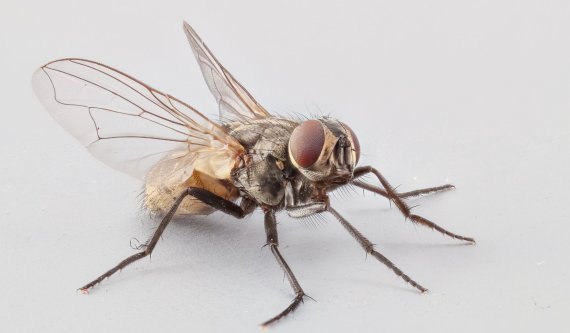© Hans Smid
The photos are available online on a Wageningen Academic Publishers e-learning site. Available to everyone, as they are Open Access. The module is an addition to the new book by Smid’s colleague Arnold van Huis: Insects as food and feed, from production to consumption. The book provides insight into the current situation in the area of insects as a source of proteins for humans and animals. All aspects are reviewed, from breeding to consumption.
Rotary view
The book contains dozens of beautiful and detailed photos of edible insects. But the photos shot by Smid in the online module are yet another level of beauty. The same insects, but viewable from all angles by means of rotary view. The added zoom functionality yields images of insects of a rarely-seen quality. Even the smallest details are discernible. Insects become monsters. Or works of art – it all depends on how you look at them.
Besides being an insect brain and behaviour researcher, Smid is also a macro photographer. He takes close-up photos of insects. The rotary view that was used is not new per se. Leading webshops have been using is for quite some time to showcase their products. But it is new to Smid. ‘I’m interested in the behaviour of insects, so I usually only photograph live ones. These photos are different in that we wanted to have photos with the highest possible detail of dead insects.’
Stacks
To get all details in perfect focus, a large depth of field is necessary. This is a challenge in macro photography. Photographers generally increase the depth of field by using smaller apertures. ‘The drawback is that it causes diffraction. Very small apertures will yield fuzzy photos that aren’t truly sharp’, explains Smid. ‘The solution is stacking photos. You take lots of photos with the exact same camera settings and move the camera a little bit forward each time.’
It enables you to image details that you wouldn’t see otherwise. This is fantastic for education.
Hans Smid
This results in a small part of the subject being sharp in each photo. Special computer software then filters those sharp parts from a stack and glue them into a single fully focused image. The rotary view is created by taking an additional step: creating photos of the subject from 36 different positions using the aforementioned method. Of course, this is not done manually. Smid has automated this process in his home studio.
Fiddling
All of this means that Smid’s photos aren’t just random shots. Each 360° image of an insect consists of 1000 to 2000 separate photos. This is obviously only possible is the insects are immobile for longer periods of time and therefore must be dead. Smid anesthetises his insects, freezes them and thaws them for the photo session, allowing him to photograph them in natural positions. ‘A lot of fiddling is involved in getting antennae, legs and head in a somewhat natural position for the shot.’ After one such session, which takes approximately one and a half hour, the computer needs a full night to produce the final result.
And the results of that work are phenomenal. Smid: ‘It enables you to image details that you wouldn’t see otherwise. This is fantastic for education.’ Besides, most insects still look alive; save for several sample that have been pinned. Those are from the museum. Smid says that is was too much of a hassle to get fresh ones from Africa or other parts of the world just for the photo session.
Megapixels
Hans Smid took the photos using a Canon M5. He made a conscious choice not to use an SLR camera. ‘Those are less ergonomic to work with from a lowered point of view. Besides, the flipping of the mirror causes vibrations that could perturb the picture.’ He has macro photography lenses attached to the camera. Smid uses the Canon MP-E 65 mm lens for the smaller insects and a 180 mm Tamron macro lens for the larger ones, combined with coupling rings. Each photo has a resolution of 24 megapixels (4000 by 6000 pixels). To somewhat restrict the file sizes, he does not shoot in RAW. The camera moves automatically along a rail. The insect is set up on a platform that also rotates automatically. He uses led lighting instead of flashes. ‘A classic flash won’t fare well with such long sessions.’ The entire setup is placed in a light cage to prevent troublesome reflections.


